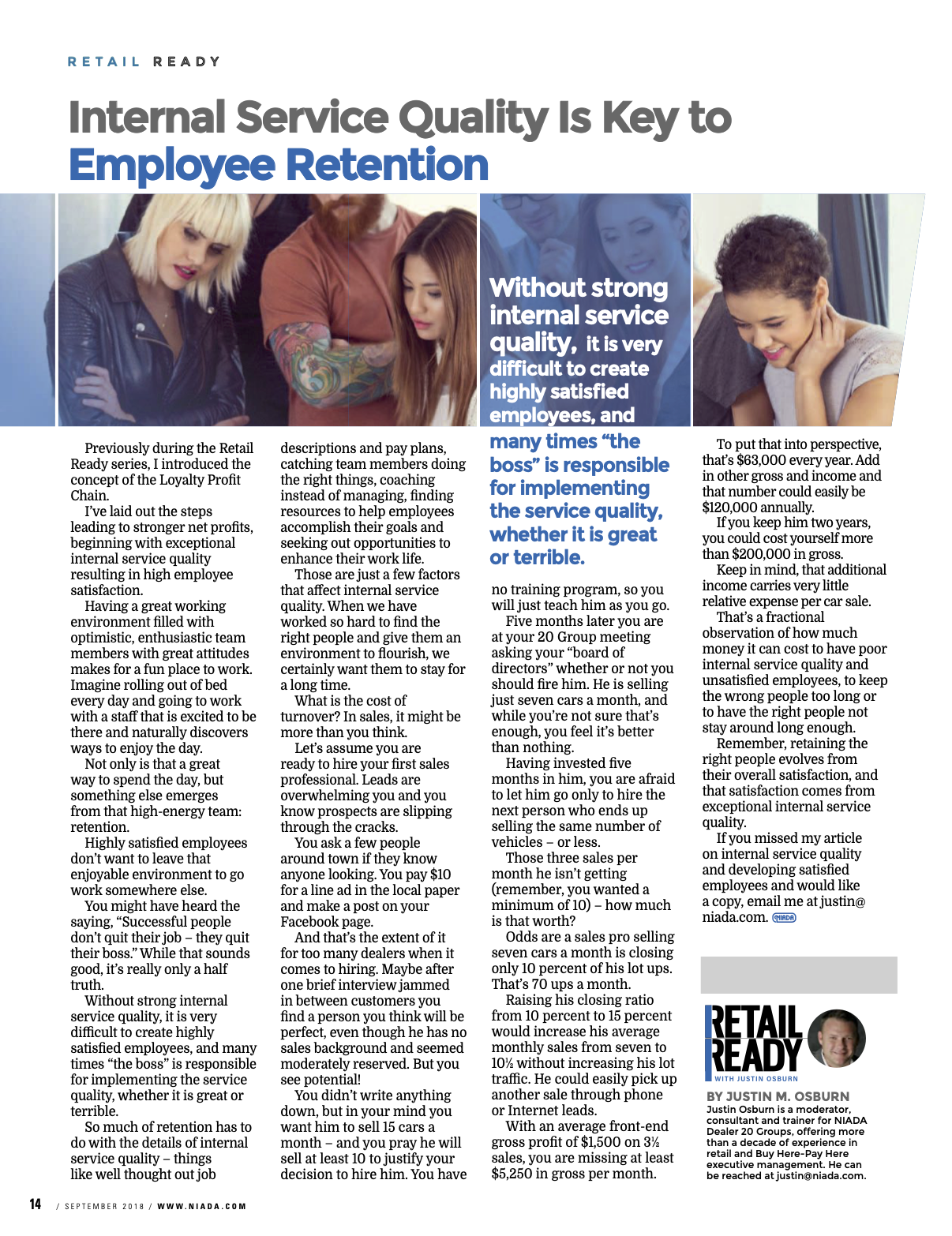Internal Service Quality is Key to Employee Retention
Previously during the Retail Ready series, I introduced the concept of the Loyalty Profit Chain.
I’ve laid out the steps leading to stronger net profits, beginning with exceptional internal service quality resulting in high employee satisfaction.
Having a great working environment filled with optimistic, enthusiastic team members with great attitudes makes for a fun place to work. Imagine rolling out of bed every day and going to work with a staff that is excited to be there and naturally discovers ways to enjoy the day.
Not only is that a great way to spend the day, but something else emerges from that high-energy team: retention.
Highly satisfied employees don’t want to leave that enjoyable environment to go work somewhere else.
You might have heard the saying, “Successful people don’t quit their job – they quit their boss.” While that sounds good, it’s really only a half truth.
Without strong internal service quality, it is very difficult to create highly satisfied employees, and many times “the boss” is responsible for implementing the service quality, whether it is great or terrible.
So much of retention has to do with the details of internal service quality – things like well thought out job descriptions and pay plans, catching team members doing the right things, coaching instead of managing, finding resources to help employees accomplish their goals and seeking out opportunities to enhance their work life.
Those are just a few factors that affect internal service quality. When we have worked so hard to find the right people and give them an environment to flourish, we certainly want them to stay for a long time.
What is the cost of turnover? In sales, it might be more than you think.
Let’s assume you are ready to hire your first sales professional. Leads are overwhelming you and you know prospects are slipping through the cracks.
You ask a few people around town if they know anyone looking. You pay $10 for a line ad in the local paper and make a post on your Facebook page.
And that’s the extent of it for too many dealers when it comes to hiring. Maybe after one brief interview jammed in between customers you find a person you think will be perfect, even though he has no sales background and seemed moderately reserved. But you see potential!
You didn’t write anything down, but in your mind you want him to sell 15 cars a month – and you pray he will sell at least 10 to justify your decision to hire him. You have no training program, so you will just teach him as you go.
Five months later you are at your 20 Group meeting asking your “board of directors” whether or not you should fire him. He is selling just seven cars a month, and while you’re not sure that’s enough, you feel it’s better than nothing.
Having invested five months in him, you are afraid to let him go only to hire the next person who ends up selling the same number of vehicles – or less.
Those three sales per month he isn’t getting (remember, you wanted a minimum of 10) – how much is that worth?
Odds are a sales pro selling seven cars a month is closing only 10 percent of his lot ups. That’s 70 ups a month.
Raising his closing ratio from 10 percent to 15 percent would increase his average monthly sales from seven to 10 1⁄2 without increasing his lot traffic. He could easily pick up another sale through phone or Internet leads.
With an average front-end gross profit of $1,500 on 31⁄2 sales, you are missing at least $5,250 in gross per month.
To put that into perspective, that’s $63,000 every year. Add in other gross and income and that number could easily be $120,000 annually.
If you keep him two years, you could cost yourself more than $200,000 in gross.
Keep in mind, that additional income carries very little relative expense per car sale.
That’s a fractional observation of how much money it can cost to have poor internal service quality and unsatisfied employees, to keep the wrong people too long or to have the right people not stay around long enough.
Remember, retaining the right people evolves from their overall satisfaction, and that satisfaction comes from exceptional internal service quality.

